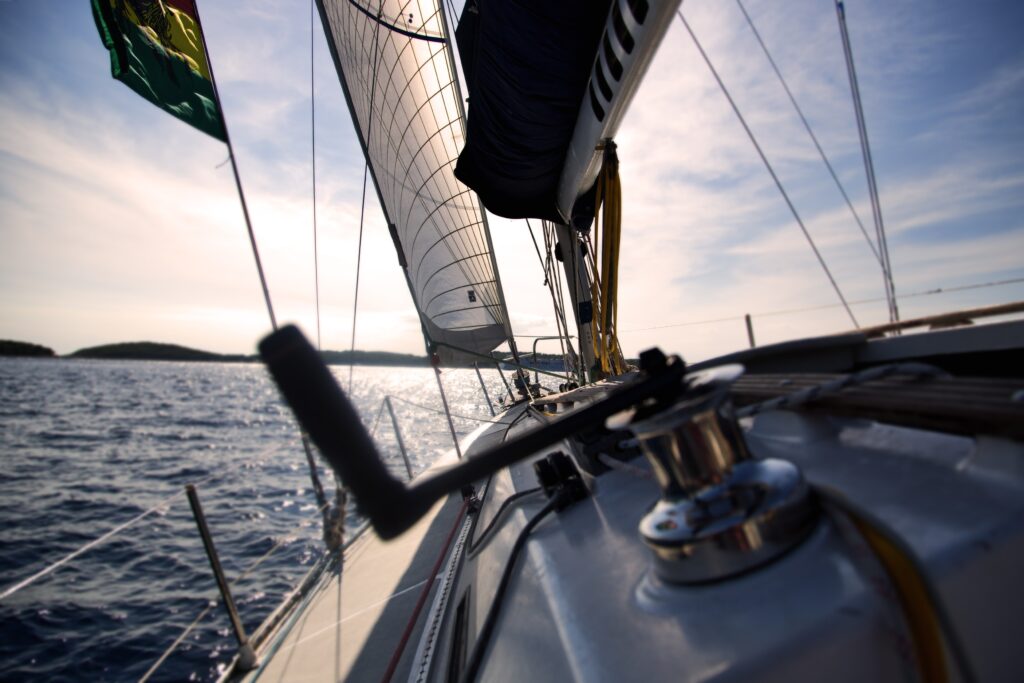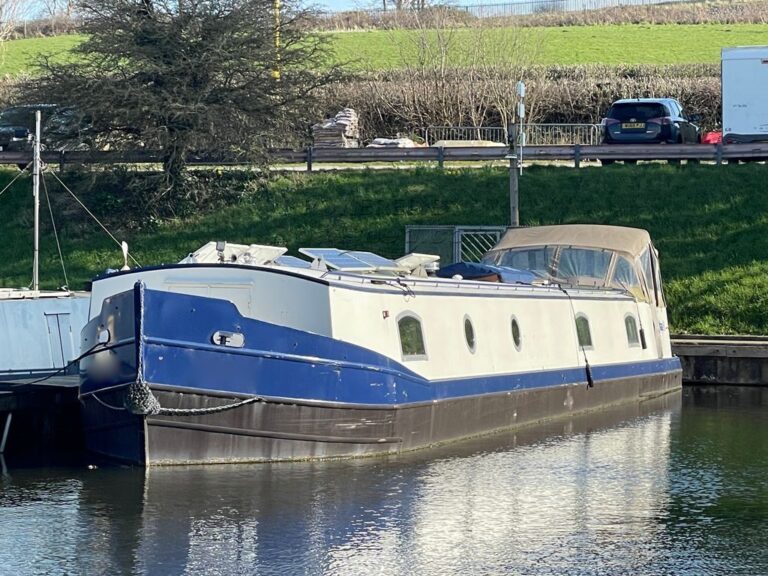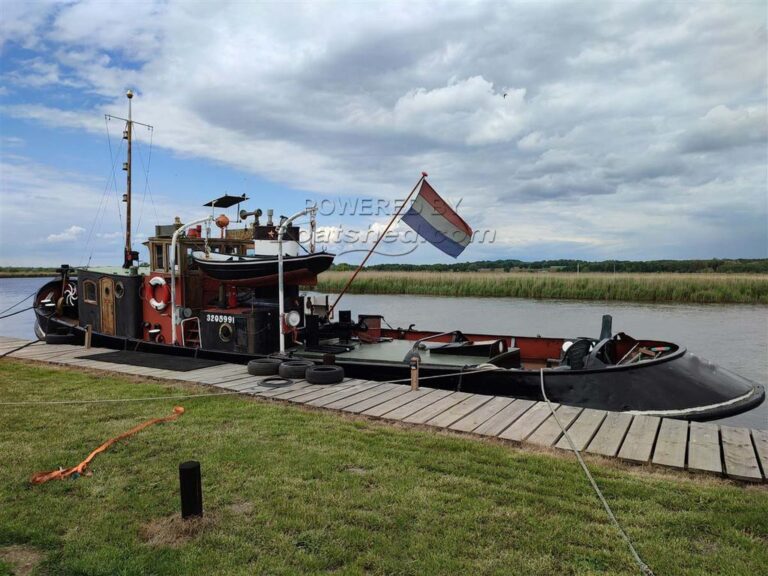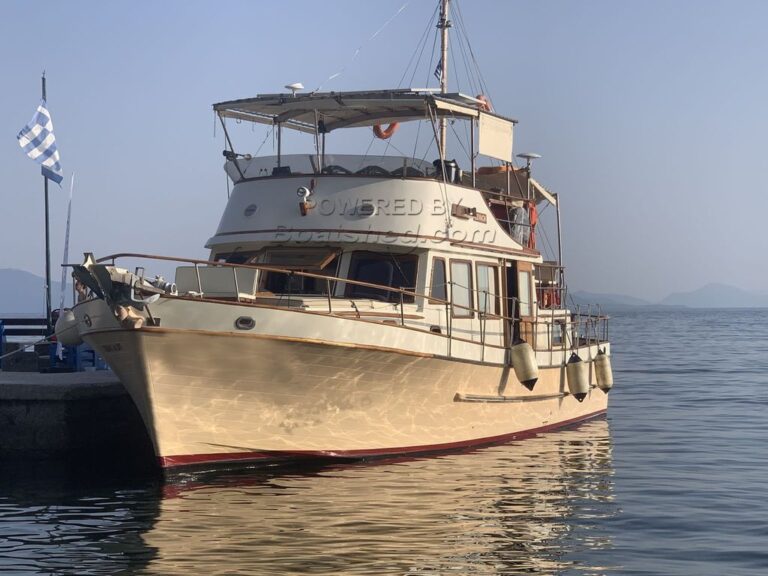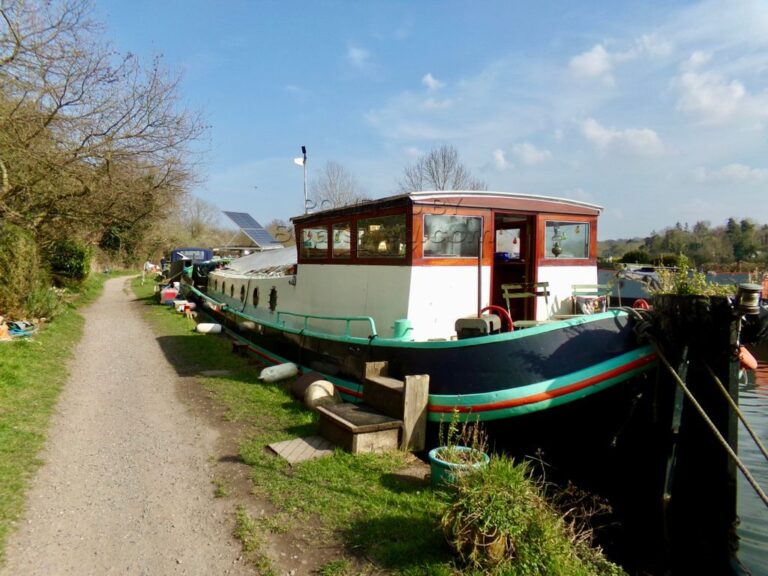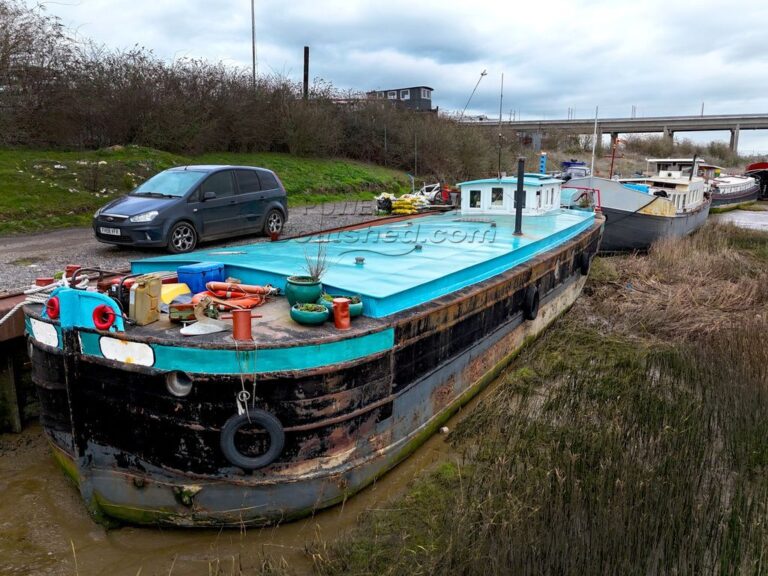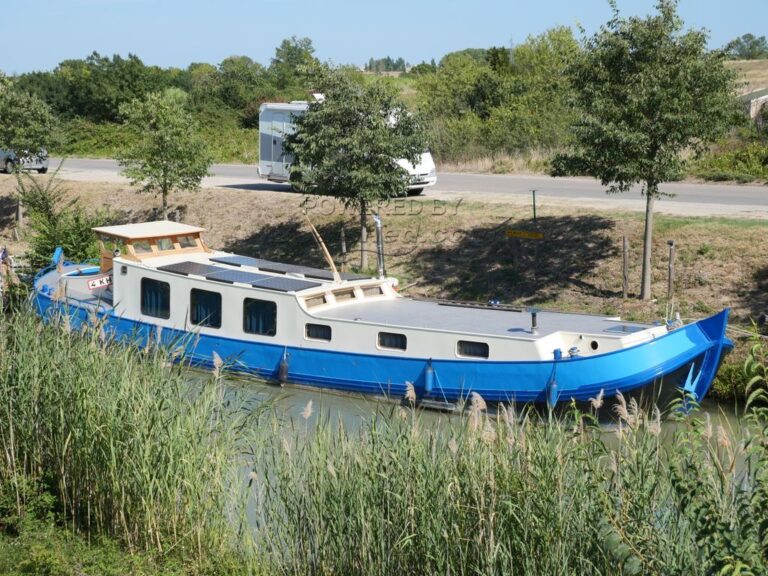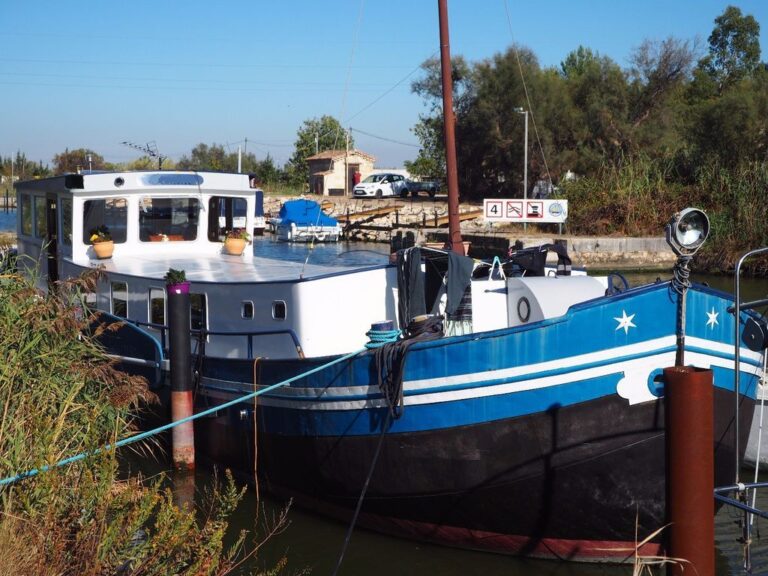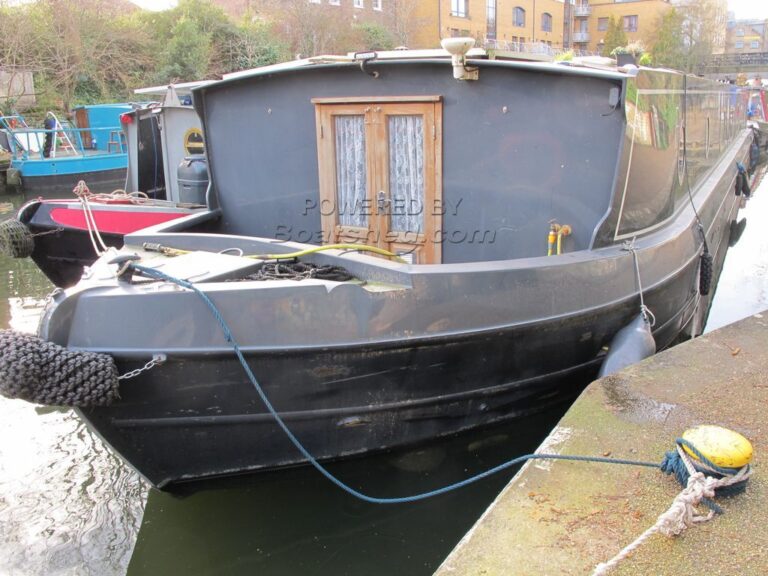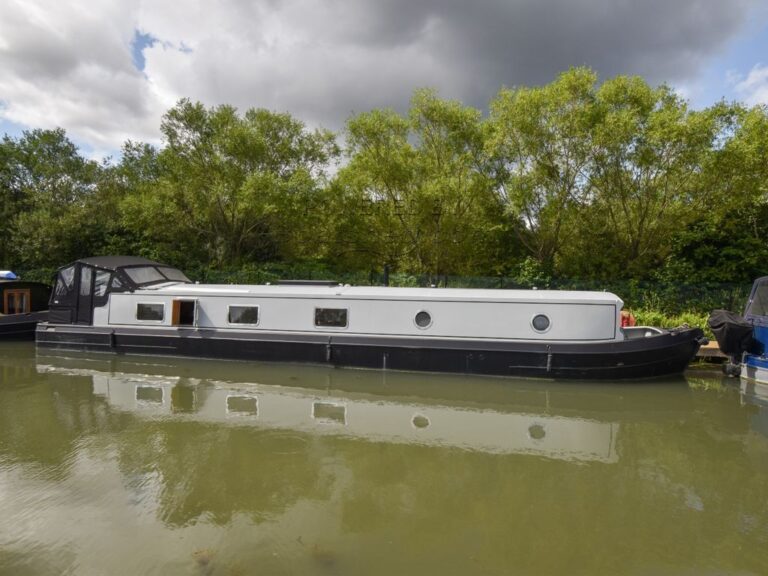The first time I truly understood seasickness wasn’t from a book or a sailor’s warning; it was a personal trial during an overnight passage in the Baltic Sea. Like many before me, I had sailed through calm and stormy waters with a kind of invincible ignorance, stubbornly refusing to believe that I was susceptible to seasickness. Perhaps it was luck that had shielded me until then, but when seasickness struck, it was a harsh revelation.
Seasickness is more than just feeling unwell; it’s a physical and psychological ordeal that can drain the joy from sailing, transforming exhilarating voyages into tests of endurance. At its core, seasickness is a form of motion sickness caused by a disconnect between what our eyes see and what our inner ear, which helps control balance, senses. When the brain can’t reconcile these conflicting signals, the result is a cocktail of symptoms ranging from mild discomfort to overwhelming nausea.
The demoralising nature of seasickness cannot be overstated. It saps the enjoyment out of sailing and turns even the simplest tasks into monumental challenges. The constant motion of the sea, which once felt exhilarating, becomes an endless torment. In extreme cases, the relentless nausea and inability to keep food or water down can lead to serious health risks like malnutrition and dehydration, making seasickness not just an inconvenience, but a genuine threat to safety at sea.
Despite the discomfort it brings, seasickness is a universal challenge that binds sailors across all seas and oceans. It’s a reminder of our human limits and the formidable power of nature. However, with understanding, preparation, and the right strategies, managing seasickness is achievable, allowing sailors to reclaim the joy of sailing and the thrill of the open sea.
Understanding Seasickness
Seasickness, or motion sickness at sea, is an adversary as old as seafaring itself, a testament to the relentless power of the ocean and its capacity to challenge even the most seasoned mariners. It’s a condition rooted in the conflict between the expected and perceived motion, where the inner ear’s detection of movement clashes with the visual cues our eyes send to the brain. This discord creates a dissonance that the body struggles to reconcile, leading to a cascade of symptoms that can cripple even the stoutest of hearts. It’s not just a matter of discomfort; it’s a battle against an invisible force that undermines the body’s sense of equilibrium and orientation.
Understanding seasickness is crucial for any sailor, not as a sign of weakness, but as a respect for the sea’s might and a recognition of our human vulnerabilities. The symptoms, ranging from mild unease to severe nausea and vomiting, are merely the body’s response to this sensory conflict. It’s a phenomenon that spares few and respects no rank or experience, striking indiscriminately and without warning. For us who make our lives and livelihoods on the waves, recognising and addressing seasickness is not just about personal comfort; it’s about safety at sea, ensuring we can perform our duties and look after our crew and vessels amidst the ocean’s unpredictable temper.
At the heart of seasickness lies a tale of confusion and conflict, one that unfolds within the depths of our own physiology. It’s a story that’s been passed down, a reminder of the sea’s complexity and our body’s intricate response to it. The narrative hinges on the inner ear, the brain, and our eyes, each playing a critical role in maintaining balance and orientation. The inner ear, our body’s gyroscope, detects motion, acceleration, and the pull of gravity, sending signals that help us navigate the world upright and balanced.
Yet, upon the heaving decks of a boat, this delicate system is thrown into disarray. When the eyes, gazing upon a seemingly stable interior of a ship, relay a message of stillness, a stark contradiction arises. The inner ear, feeling the ocean’s undulations, sends a drastically different signal. This mismatch between visual and vestibular inputs is where the trouble begins. The brain, confronted with conflicting information, struggles to find coherence.
An old sailor’s anecdote captures the essence of the resulting nausea: the brain, in its attempt to resolve this sensory conflict, concludes that such disorientation could only arise from being poisoned. This primal response triggers the body’s defense mechanism—nausea and vomiting, in a misguided effort to expel the supposed toxins. It’s a stark reminder of our evolutionary pathways, where the brain’s default to a state of caution could once have been a lifesaver, but on the open sea, it becomes a source of profound discomfort.
This ancient mechanism, designed to protect us, underscores the complexity of our interaction with the marine environment. It reveals seasickness as not merely a physical ailment but a deeply ingrained, physiological response to an environmental challenge. Understanding this response is the first step in mitigating its effects, allowing us to align our body’s perceptions with the reality of life at sea, and in doing so, reclaim the joy and freedom that come with sailing the vast, open waters.
Roughly one third of people are highly susceptible to motion sickness, and most of the rest get sick under extreme conditions. Around 80% of the population is susceptible to cases of medium to high motion sickness.
For many of us who take to the sea, the reality of seasickness looms like an ever-present fog on the horizon. While the conditions and thresholds for experiencing seasickness can vary widely among individuals, a common truth emerges: given extreme enough circumstances, the majority of us will confront this unwelcome companion. Through my own voyages, I’ve charted a personal map of the conditions that heighten my susceptibility to seasickness, offering a glimpse into the nuanced nature of this malady.
Daytime sailing, with the sun high and the horizon clear, represents a sanctuary of sorts. Here, above deck, where the vast expanse of the sea meets the sky, my equilibrium remains unchallenged, and seasickness is kept at bay. The visual stability of the horizon acts as a steadfast ally, helping to align the conflicting signals between my eyes and inner ear that are at the heart of seasickness.
Yet, as the sun sets and night blankets the sea, the conditions change. Night passages, devoid of the visible horizon, present a challenge. Without the visual anchor of the horizon, the dissonance between what my body feels and what my eyes perceive intensifies, and seasickness can emerge from the depths. Similarly, venturing below decks, where the motion of the ship is felt but not seen, can swiftly usher in the symptoms of seasickness, even in what might otherwise be considered calm conditions.
These personal observations underscore a critical aspect of seasickness: its situational nature and the profound impact of visual cues on our sense of balance and well-being at sea. It highlights the importance of understanding not just the general phenomenon of seasickness, but also our individual triggers and tolerances. By sharing these insights, we not only shed light on the complexities of seasickness but also invite others to explore their own experiences and strategies for navigating the challenges it presents, and preventing seasickness.
In the vast and unpredictable realm of the sea, knowledge and preparation are our best defences against seasickness. Recognising the conditions under which we are most vulnerable allows us to adopt strategies that can mitigate its impact, ensuring that we can continue to embrace the adventure and freedom of sailing, even when the seas turn against us.
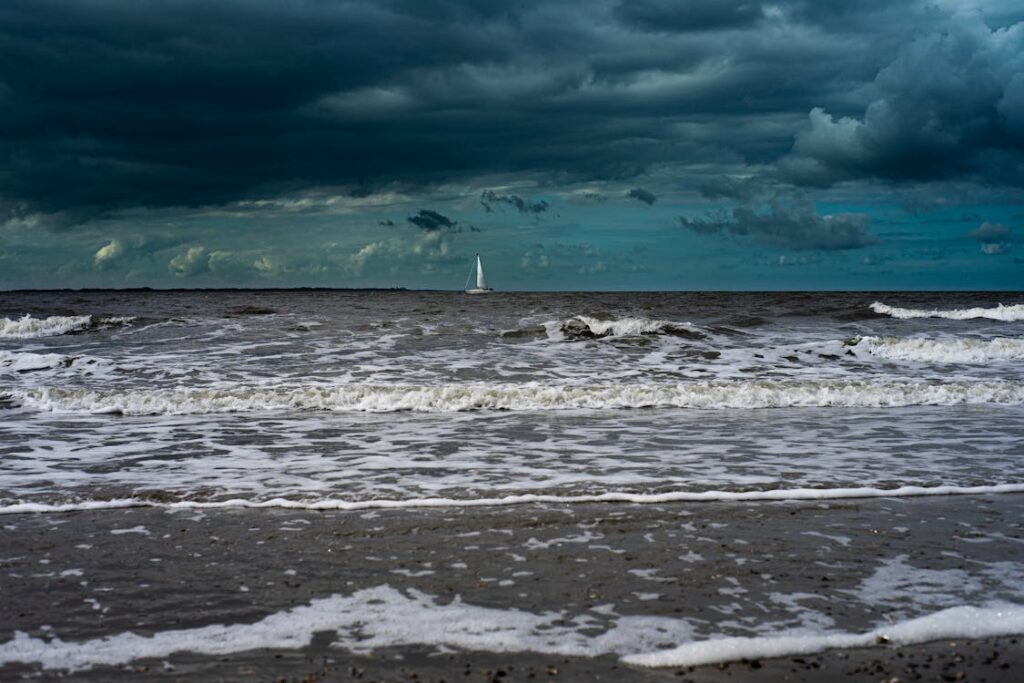
Signs and Symptoms
The initial whisper of seasickness often echoes a familiar, albeit unwelcome, refrain reminiscent of a hangover. It’s a slow crescendo from subtle discomfort to a full symphony of malaise, marking the journey into seasickness with signs and symptoms that, while varying from sailor to sailor, share common threads in their tapestry of distress.
Early Signs of Seasickness
The voyage into seasickness begins with an undercurrent of unease. It’s the body’s quiet warning before the storm, where the initial symptoms might be easily dismissed or mistaken for another ailment. These early signs include:
- A subtle sense of unease or discomfort
- Slight dizziness or lightheadedness
- Increasing salivation, an early harbinger of nausea
- A vague sense of disorientation or confusion
As with navigating the sea, early recognition and action are key. Addressing these initial symptoms promptly can often mitigate the impending discomfort or even steer clear of the worst to come.
Symptoms Progression
For those who press on, either by necessity or oversight, the symptoms of seasickness build like a rising tide. The comparison to a hangover becomes more apt as the body enters a state of rebellion against the conflicting sensory inputs it’s struggling to reconcile:
- Cold Sweats: A clammy discomfort not unlike the onset of fever, marking the body’s increasing distress.
- Nausea: The hallmark of seasickness, where the stomach churns in protest, threatening to expel its contents as the body seeks to rid itself of the perceived toxin causing its disorientation.
- Headache: A pressing or pounding headache can ensue, adding to the overall misery by clouding one’s ability to think clearly or focus.
- Reduced Appetite: The mere thought of food becomes unpalatable, as the body diverts its energies to dealing with the sensory conflict.
- Drowsiness: Despite an overwhelming desire to sleep, true rest is elusive, as drowsiness competes with the body’s discomfort.
While this progression paints a daunting picture, it’s crucial to remember that seasickness is as individual as the sailors who brave the seas. Some may experience only mild symptoms, barely a ripple on their voyage, while others find themselves weathering a more formidable storm.
Understanding these signs and symptoms is the first step in crafting a personalised strategy to combat seasickness. It’s a blend of preparation, resilience, and knowing when to seek the horizon’s steady line or the solace of the deck, aiming to align the body’s internal compass with the motion of the sea.
In sharing these experiences and insights, we forge a collective map to navigate the challenges of seasickness, guided by the knowledge that while the symptoms may vary, the journey through them is a path well-traveled by sailors of all stripes.
Managing Seasickness
Embarking on a maritime adventure requires not just a spirit of exploration but also a meticulous approach to preparation, especially when it comes to managing the risk of seasickness. Drawing on a trove of personal experiences and tried-and-tested strategies, here’s a guide to setting the stage for a smoother voyage.
Preventing Seasickness – Medication as a First Line of Defence:
Among the plethora of options for managing seasickness, two names stand out for their efficacy and accessibility: Stugeron and Dramamine. Both have carved a niche in the sailor’s toolkit, offering a beacon of relief in the choppy waters of motion sickness.
- Stugeron (Cinnarizine): Available over the counter in places like Boots, Stugeron is a traveler’s ally against the tumultuous seas. Its active ingredient, cinnarizine, works by blocking the signals that trigger the vomiting centre in the brain, offering a shield against nausea and vomiting. The effectiveness of Stugeron as a preventive measure can be a game-changer for those susceptible to seasickness.
- Dramamine (Dimenhydrinate): A well-known antihistamine, Dramamine tackles seasickness with the precision of a seasoned sailor. While its side effect of drowsiness can be a drawback for some, it can be strategically turned to advantage, as my personal regimen attests.
While Stugeron and Dramamine have stood as steadfast allies against the trials of seasickness in my own seafaring adventures, steering me towards calmer waters and symptom-free voyages, it’s paramount to remember that every sailor’s journey through the seas of health is unique. The effectiveness of these medications, as profound as it has been in my experience, underscores a broader principle: the importance of individual health considerations and the wisdom of professional guidance.
Before setting sail on a regimen of seasickness prevention, I cannot stress enough the value of consulting with a healthcare professional. Such consultations offer more than just a green light for medication use; they provide a comprehensive understanding of how these remedies fit within the vast ocean of your personal health landscape. A medical professional can consider your specific health history, potential interactions with other medications, and your unique physiological makeup to tailor advice that ensures not only the effectiveness of seasickness prevention but also your overall well-being.
Remember, the goal is not just to reach our destination but to enjoy the journey. By ensuring that our preparations are as thorough and informed as possible, we set the course for a voyage that is not only free from the discomfort of seasickness but also enriched by the peace of mind that comes from knowing we’ve made health a priority.
Steering Through Seasickness: Behavioural and Psychological Strategies Beyond Medication
While medication stands as a formidable bulwark against the tumult of seasickness for many sailors, the journey to mastering the seas also navigates through the realms of behavioural and psychological strategies. These approaches not only complement medicinal aids but can also serve as primary tactics for those seeking to acclimate to the marine environment, especially when embarking on their maiden voyages.
Acclimation: The Foundation of Preventing Seasickness. The key to minimising seasickness may not always lie in a pill bottle but in the very act of acclimation. Spending time aboard your vessel prior to setting sail is more than a preparatory measure; it’s an investment in your body’s ability to adapt to the marine environment. This period of acclimation allows you to familiarise yourself with the boat’s motion while still docked or in calm waters, laying the groundwork for your body to develop its ‘sea legs.’ It’s about building a rapport with the sea, understanding its rhythms, and allowing your body to adjust to the motion of the boat in a controlled, gradual manner.
Identifying and Managing Triggers. Understanding your specific seasickness triggers is crucial. Like navigating through a complex chart of waters, recognising what conditions or activities onboard might exacerbate seasickness allows for strategic planning. For myself, the revelation that night passages and the necessity of being below decks in rough weather were significant triggers guided me towards a targeted approach in managing seasickness. This insight has led to a selective use of medication, reserved only for these identified challenging scenarios, rather than a blanket application for all sailing experiences.
Selective Medication Based on Personal Needs. The decision to medicate, therefore, becomes a nuanced one, informed by a deep understanding of personal seasickness triggers and the demands of the upcoming voyage. For many sailors, including seasoned mariners, this approach provides a balance, ensuring medication is there when needed but also encouraging natural adaptation and resilience where possible.
The Psychological Aspect: Confidence and Preparation. Beyond the physical preparations, the psychological aspect plays a pivotal role. Approaching your voyage with confidence, informed by both knowledge and experience, can significantly impact your susceptibility to seasickness. The assurance that you have strategies in place, both medicinal and behavioural, creates a mindset equipped to handle the challenges of seasickness more effectively.
In the vast expanse of seasickness management, understanding one’s triggers and adopting a tailored approach to medication and behavioural strategies represent the beacons that guide us through. Each sailor’s journey is unique, and as such, the strategies employed should reflect personal experiences, triggers, and preferences. By adopting a flexible and informed approach, sailors can navigate the challenges of seasickness with confidence, ensuring that their time at sea is marked by exploration and enjoyment, rather than discomfort.
Navigating Nutrition: Dietary Recommendations for Preventing Seasickness
Embarking on a voyage across the sea demands not just a readiness of the mind and spirit but also a careful consideration of our dietary habits. What we consume before and during our journey can significantly influence our susceptibility to seasickness, turning what could be a serene sail into a turbulent ordeal. Based on seasoned experience and nutritional guidance, here are some key dietary recommendations to help keep seasickness at bay.
Before Setting Sail: The Pre-Voyage Diet
The preparations for a sea journey begin with what we choose to eat and drink in the hours leading up to departure. To fortify your body against the waves of nausea:
- Avoid Alcohol: While it may be tempting to indulge in a farewell drink, alcohol can dehydrate and disorient, exacerbating the likelihood of seasickness. It’s best to steer clear of alcoholic beverages for at least 24 hours before embarking.
- Sidestep Spicy, Greasy, or Fatty Foods: Foods that are heavy, spicy, or rich in fats can aggravate your digestive system and increase the chances of feeling unwell at sea. Opt instead for lighter, more digestible meals that won’t overburden your stomach.
- Prevent Overeating: Overloading your stomach before a voyage can trigger discomfort and amplify seasickness symptoms. Aim for smaller, more frequent meals that provide energy without weighing you down.
During the Voyage: Natural Seasickness Remedies

Once aboard, maintaining a seasickness-preventive diet is key to enjoying your time on the water. Here’s how to sustain your defence against the waves:
- Stay Hydrated: Keeping hydrated is essential, especially when facing the risk of seasickness. Water is your best ally, but small sips of clear or fizzy drinks can also help settle your stomach. Avoid excessive caffeine and alcohol, as they can lead to dehydration.
- Opt for Bland, Easy-to-Digest Foods: If the sea does stir up discomfort, bland foods like crackers, bread, or plain rice can be soothing options. These simple carbohydrates are easy on the stomach and can help absorb excess acid and reduce nausea.
- Listen to Your Body: Appetite can fluctuate widely at sea. It’s important to eat if you’re feeling up to it, but don’t force yourself. Small, light snacks can be more manageable and effective in keeping nausea at bay.
- Natural Seasickness Remedies: Incorporating ginger into your diet, whether in the form of ginger tea, ginger ale, or even ginger biscuits, can provide natural nausea relief. Ginger has been used for centuries to combat seasickness and remains a favoured remedy among sailors.
A Balanced Approach to Voyage Nutrition
Adopting these dietary strategies can serve as a powerful tool in your seasickness prevention arsenal. By carefully selecting what to consume before and during your journey, you not only enhance your overall well-being but also increase your chances of a pleasant and enjoyable sea experience. Remember, the sea demands respect in all aspects, including how we prepare our bodies to meet its challenges.
On-the-Spot Remedies
When the uneasy stirrings of seasickness begin to make themselves known, swift and decisive action can make all the difference between a minor discomfort and a day spent in misery. Based on seasoned sailor wisdom, here are the steps to take at the first hint of trouble:
Step 1: Seek Fresh Air and Open Spaces. The stuffy, enclosed areas below deck can exacerbate seasickness symptoms. Your first move should be to get on deck where the fresh air and open spaces can help alleviate that oppressive feeling. Even if the weather is less than perfect, the benefit of fresh air far outweighs the discomfort of a little rain.
Step 2: Fix Your Gaze on the Horizon. Once on deck, position yourself facing the bow (the front of the boat) and fix your eyes on the horizon. This simple act can be surprisingly effective. The steady, distant horizon provides a visual point of reference, helping your brain reconcile the conflicting signals between your inner ear’s sense of movement and what your eyes are seeing. This alignment can gradually reduce the symptoms of seasickness.
Step 3: Breathe Deeply and Stay Calm. Deep, controlled breathing can help manage the onset of nausea and dizziness. Try to inhale slowly through your nose, hold for a few seconds, and then exhale slowly through your mouth. Keeping calm and practicing mindfulness can also mitigate the psychological aspects of seasickness, reducing the sensation of panic that might accompany the physical symptoms.
Step 4: Limit Rapid Head Movements. Rapid movements, particularly of the head, can intensify the disorientation and nausea associated with seasickness. Make an effort to move slowly and deliberately, keeping your head as steady as possible as you navigate around the boat.
Step 5: Stay Hydrated. Natural seasickness remedies like small sips of water or a clear, fizzy drink can help settle your stomach and prevent dehydration, which can worsen seasickness symptoms. Avoid drinking too much at once, as this can overload your stomach.
Every sailor’s body reacts differently to the challenges of the sea, and what works for one may not work for another. These immediate actions are starting points, guiding principles that can be adapted based on your personal experiences and what you find most effective in managing seasickness.
Remember, seasickness is a common challenge faced by many on the water, but with the right strategies and responses, it can often be quickly managed, allowing you to return to the joys of sailing and the adventure that awaits on the open sea.
Technological and Equipment Aids
In the quest to keep seasickness at bay, sailors and travellers alike have turned to a variety of tools and technologies. Among these, wearable devices such as seasickness wristbands and patches have emerged as popular options. These wearables are designed with the aim of preventing seasickness or alleviating the symptoms of motion sickness through non-invasive means. Here’s a closer look at what they offer:
Seasickness Wristbands: These bands typically utilise acupressure principles, applying pressure to specific points on the wrist believed to reduce nausea. The concept is rooted in traditional Chinese medicine, with the Nei-Kuan point on the wrist being the target for this pressure. Wristbands are non-invasive, drug-free, and reusable, making them an attractive option for those cautious about medication side effects.
Transdermal Patches: Transdermal patches work by slowly releasing medication through the skin to aid preventing seasickness symptoms. The most common active ingredient in these patches is scopolamine, which works to inhibit the nerve signals associated with motion sickness. Patches are applied behind the ear and can be effective for several days, providing a ‘set it and forget it’ solution.
While many travellers swear by the efficacy of these wearable devices, it’s important to approach them with a balanced perspective. Personal experiences vary widely, and what works for one individual may not be effective for another. The scientific evidence supporting the effectiveness of natural seasickness remedies like acupressure wristbands, in particular, remains a topic of debate among researchers, with studies showing mixed results.
My own journey on the seas has not included the use of these wearables, and I tend to lean on more traditional methods of seasickness prevention and management. This, however, does not discount the value they may hold for others. If you have found relief from seasickness through the use of wristbands or patches, there’s no compelling reason to change your approach. The adage “don’t fix what isn’t broken” applies well here.
Choosing What’s Right for You. When considering wearable technology or natural seasickness remedies, it’s essential to weigh personal experience and comfort with the available evidence. If you’re exploring these options for the first time, it may be worth trying them in conjunction with other established seasickness prevention strategies. Remember, the goal is to find a solution that allows you to enjoy your time at sea to the fullest, whether that’s through traditional remedies, wearable technology, or a combination of methods.
Ultimately, the choice of whether to use seasickness wristbands, patches, or other wearable technologies is a personal one. It’s always advisable to consult with a healthcare professional, particularly when considering medicinal patches, to ensure compatibility with your health profile and other medications you may be taking.
Personal Stories and Solutions
The journey through seasickness is as varied as the individuals who traverse the world’s waters. Each sailor’s story adds a unique chapter to the vast anthology of maritime experiences, offering insights, laughter, and a shared sense of camaraderie in the face of this common challenge. Here are two such tales, highlighting the personal battles and unexpected turns in the quest to find sea legs.
My Tactical Approach
My own voyage with seasickness has charted a course through calm and storm alike. Despite growing up with the sea as my playground and logging countless nautical miles without incident, seasickness eventually found its way to me, revealing its triggers in conditions I had previously navigated with ease. Night passages and the turbulent, unseen waves below decks became my nemeses, catching me unawares after years of unaffected sailing.
The solution I discovered lies in preemptive action and a trusted ally: Stugeron. Knowing the conditions that stir the seasickness within me, I’ve learned to anticipate and counteract. Before rough seas or night passages, I take a tablet—four hours before my watch or as the sun dips below the horizon, preparing my body to withstand the onslaught. This ritual has become my bulwark against the tempest of nausea, allowing me to sail through my triggers with newfound resilience.
An Unconventional Cure at the Fastnet Race
My wife’s first encounter with seasickness offers a lighter, albeit poignant, reflection on the ordeal. Her baptism by fire came during her maiden Fastnet race, a challenge that introduced her to the harsh realities of seasickness amid relentless waves. For two days, she battled, unable to retain food or fluids, as the race pressed on around her.
On the third day, with her condition unimproved, our skipper proposed a drastic measure: a suppository remedy to prevent dehydration. Whether it was the shock of this suggestion or merely the passage of time allowing her body to adapt, her seasickness abruptly receded. Was it the fear of the proposed remedy or the natural acquisition of her sea legs? We may never know, but the turnaround was as welcome as it was sudden, allowing her to continue the race with renewed vigour.
Lessons from the Depths
These stories, from the tactical to the humorous, underscore the deeply personal battle against seasickness that many sailors face. They remind us that while the sea does not discriminate in its challenges, our responses are as diverse as our personalities and experiences. Whether through careful planning and medication or through unexpected remedies and the sheer will to adapt, the journey to overcoming seasickness is a testament to the resilience and ingenuity of those who love the sea.
In sharing these anecdotes, we not only offer practical advice but also extend a hand of solidarity to our fellow sailors. Seasickness, with all its trials and tribulations, is but a part of the larger adventure of sailing—a challenge to be met, managed, and, perhaps, even laughed at in hindsight.
Final Thoughts
As we draw the charts to the close of our exploration into seasickness, it’s important to anchor in the message that while seasickness is a formidable opponent for many sailors, it is by no means an insurmountable one. The journey across the vast, open waters is filled with challenges, but seasickness, with the right knowledge and preparation, can be navigated effectively.
Seasickness: A Manageable Companion
For those preparing to embark on their first sailing adventure, let the tales and strategies shared here serve not as a beacon of caution, but rather as a lighthouse guiding you to safer, more enjoyable voyages. Seasickness, for all its discomfort, hasn’t diminished my love for sailing; it’s merely introduced a new dimension to the adventure. It’s a testament that with understanding, preparation, and the right measures, the waves of nausea can be tamed.
Consult, Prepare, and Sail
For those who feel apprehension, remember that knowledge is your best defense. Consulting with a medical professional can provide you with tailored advice and safe remedies, equipping you to face potential seasickness with confidence. Embrace preventative measures as your first line of defence, for they are the keel that keeps your vessel steady, rather than scrambling to batten down the hatches once the storm has already begun.
The Horizon Awaits
Let us not forget that at the heart of sailing is the call of the horizon, the promise of adventure, discovery, and the profound beauty of the sea. Seasickness, while a part of the maritime tapestry, should not deter you from answering this call. With the strategies and experiences shared, you’re now better equipped to set sail, knowing that should seasickness rise like a wave before you, you have the tools and knowledge to navigate through it.
So, to every aspiring sailor reading this: the sea is a vast, inviting expanse, teeming with life and adventures waiting to be had. Don’t let the fear of seasickness hold you back. The world is your oyster, and the sea, its pearl. Prepare, set sail, and let the sea’s boundless wonders unfold before you.
The sea is a tapestry of endless stories, each wave a narrative, every sailor a storyteller. Your journey through the challenges of seasickness adds a unique thread to this ever-expanding narrative. We invite you to share your own experiences, natural seasickness remedies, and tales of triumph over seasickness in the comments below. Whether it’s a remedy passed down through generations, a new technology that steadied your horizon, or a humorous anecdote from your nautical adventures, your story has the power to enlighten, inspire, and comfort fellow sailors navigating through similar waters.
As we chart our courses and prepare our remedies, the compass that should guide us is the knowledge and expertise of healthcare professionals. Before setting sail with new medications or trying out alternative remedies, we strongly encourage you to consult with a healthcare professional. This step ensures that your chosen methods are safe and tailored to your individual health needs, steering you clear of potential adverse effects and toward smoother sailing experiences.
The journey across the sea, with all its beauty and challenges, is one we embark on together. By sharing our stories and solutions, we build a community of support and knowledge, making each voyage safer and more enjoyable for everyone. So, as you prepare for your next adventure on the waters, remember that you’re not alone in facing the trials of seasickness. Together, we can navigate the seas with confidence, armed with the wisdom of our collective experiences and the guidance of medical professionals.
We look forward to hearing your seasickness stories and solutions. Email hello@sailors.project1031.com to share yours!
Cast off the bowlines, sail away from the safe harbour, and join us in the grand adventure of sailing. The sea awaits, full of stories yet to be told and horizons yet to be explored.
Resources and References
To further explore the management and understanding of seasickness, the following resources offer a wealth of information:
- Centers for Disease Control and Prevention (CDC) – Traveler’s Health: Gain insights on general travel health tips and precautions, including managing motion sickness. Visit CDC Traveler’s Health
- World Health Organization (WHO) – International Travel and Health: WHO provides guidance on health risks including seasickness for international travelers. Visit WHO Travel and Health
- National Health Service (NHS) – Motion Sickness: The NHS offers detailed information on symptoms, causes, and treatment options for motion sickness. Visit NHS Motion Sickness
- Sail Magazine – Seasickness Prevention Tips: Find practical advice from seasoned sailors on preventing and managing seasickness. Visit Sail Magazine
- The Royal Yachting Association (RYA) – Health Advice for Sailors: Access RYA’s comprehensive guide on staying healthy at sea, including managing seasickness. Visit RYA Health Advice
Remember, while these resources can provide valuable information and tips, consulting with a healthcare professional before trying new medications or treatments is always recommended.

